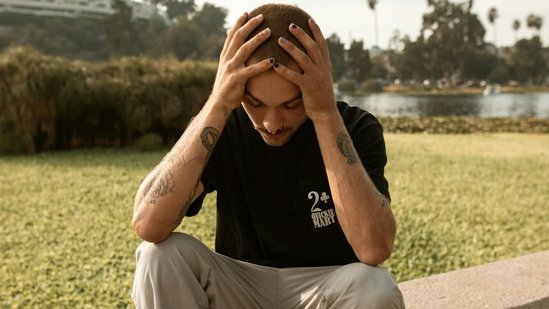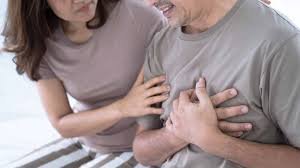
In recent times, an increasing number of young men are calling ambulances due to symptoms like chest pain, breathlessness, and racing heartbeat. These symptoms often lead them to believe they are experiencing a heart attack. However, after detailed medical checks, doctors usually conclude that they suffered from a panic attack. This growing confusion between anxiety and heart attack symptoms points to a deeper issue—mental health ignorance and the stigma that stops men from seeking therapy.
Anxiety and heart attacks can produce very similar physical symptoms. During a panic attack, a person may feel tightness in the chest, excessive sweating, shortness of breath, rapid heartbeat, dizziness, and even numbness in their hands. These symptoms are also common in cardiac emergencies, which is why they are so confusing. Because these signs are alarming and intense, many young men fear they are in danger and rush to the emergency room, only to be told that their heart is healthy and the issue is psychological.
So why don’t young men seek therapy when they feel anxious? There are many reasons. First, there’s a strong fear of being judged. In many cultures, including India, men are often told to be tough and unemotional, which makes them afraid to admit they are struggling. Second, there’s a general lack of awareness about mental health. Many people don’t know what anxiety actually feels like or how to deal with it. Third, social expectations often discourage men from showing any signs of emotional vulnerability. Lastly, there’s the issue of access. Therapy can be expensive, and mental health services are not available in every city or town, especially in rural India.
When someone suddenly experiences intense symptoms like chest pain or difficulty breathing, their first thought is usually about their physical health, not mental health. As a result, they are more likely to dial emergency services than to reach out to a mental health professional. According to several doctors, it’s common to see young, otherwise healthy men in their twenties or thirties come in, thinking they’re having a heart attack. But most of the time, the diagnosis turns out to be severe anxiety or panic disorder.
The reason this happens is tied to how our brain and body react to stress. When the brain thinks it is in danger, it activates the “fight or flight” response. This releases stress hormones like adrenaline and cortisol, which cause physical reactions—increased heart rate, shallow breathing, tight muscles, and sweating. When someone is under constant stress, their body may stay in this heightened state, leading to frequent panic attacks that feel like medical emergencies.
This problem is not limited to big cities. Even in smaller towns and semi-urban areas, hospitals are reporting more cases of young men showing panic symptoms. Whether it’s academic pressure, job stress, relationship issues, or social media anxiety, the modern lifestyle is affecting young people’s mental well-being.
Ignoring anxiety doesn’t make it disappear. In fact, it often gets worse. Untreated anxiety can lead to other serious issues like depression, addiction, sleep disorders, relationship problems, and even thoughts of suicide. Mental health experts emphasize that anxiety is treatable, especially if addressed early with proper care.
Many young men have shared their experiences. Rahul, a 27-year-old engineer from Bengaluru, said, “I thought I was dying. I had chest pain and couldn’t breathe. But after several tests, doctors told me it was anxiety. That was the first time I even considered seeing a therapist.” Similarly, a man from Pune shared how he kept visiting heart specialists without getting answers—until one finally recommended counseling, which made a huge difference in his life.
Therapy can help people understand their thoughts, manage their emotions, and build coping strategies. Popular methods for treating anxiety include Cognitive Behavioral Therapy (CBT), mindfulness practices, talk therapy, and group counseling. Even a few sessions can significantly improve how someone handles stress.
Thankfully, technology is making mental healthcare more accessible. Many online therapy platforms now offer chat-based counseling, video sessions, and self-help tools. Apps like InnerHour, MindPeers, and YourDOST provide affordable and convenient options for those who want private help without stepping into a clinic.
Alongside therapy, there are also many lifestyle changes that can help reduce anxiety. Regular exercise, a balanced diet, getting enough sleep, reducing caffeine and alcohol, and practicing meditation or yoga can all support mental health. These simple habits can lower stress levels and prevent anxiety from taking control.
Public figures are also playing a role in ending the stigma around mental health. Celebrities like Deepika Padukone, Virat Kohli, and international stars like Glenn Maxwell have openly discussed their mental health struggles. Their stories encourage others—especially young men—to speak up and seek help.
Educational institutions and workplaces must also step in by promoting mental health education, hosting wellness programs, and offering counseling services. Young people need to be taught that asking for help is a sign of strength, not weakness.
The confusion between panic attacks and heart attacks among young men is more than a medical issue—it’s a cultural and psychological crisis. The fact that many choose to call an ambulance instead of a therapist shows how urgently we need to change the way we view mental health. It’s time to normalize therapy, create safe spaces for young men to talk, and ensure they have access to the support they need. Mental health is just as important as physical health, and the sooner we act, the better the future will be for the next generation.































